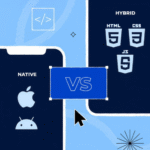Employee orientation is a structured approach to familiarizing newcomers with a company. It takes place during their first days or weeks of employment. The main goal of orientation is to help newcomers to understand culture, policies, processes and adapt to their job responsibilities. While informal introductions are about building comfort in communication, orientation is a for orientation, build a systematic working workflow and introduce a person to it. Both help to reduce the anxiety, but do it in their own ways.
What is employee orientation in greater detail? The process usually encompasses administrative tasks such as completing paperwork, setting up technology accounts, and reviewing safety protocols. However, it is important to understand that an effective process extends beyond bureaucratic requirements. Consequently, it must include meaningful connections with colleagues, understanding the values, and knowing how individual contributions align with broader company objectives. Modern orientation programs frequently span several days or weeks, letting people absorb information gradually rather than experiencing overwhelming information dumps.
Orientation vs. Onboarding
Staff orientation represents the initial phase of a broader employee integration strategy, while onboarding encompasses the entire journey of bringing new hires to full productivity. Orientation typically takes place within the first days and emphasizes immediate needs. The list of those usually includes setting up the workspace, making introductions, and reviewing essential policies.
In contrast, onboarding extends over several weeks or months and concentrates on long-term development, relationship building, and gradual skill enhancement. Unlike orientation, onboarding guarantees that your new people understand career advancement opportunities, forge strong professional relationships, and master complex job responsibilities. Consider orientation as the groundwork and starting out as the comprehensive construction process that transforms a newcomer into a truly effective professional.
Why Employee Orientation Is Crucial for New Hires
Employee orientation serves as the critical first impression that shapes long-term employee satisfaction and performance. Research.com states that people who experience comprehensive orientation programs report higher job satisfaction, stronger organizational commitment, and increased confidence in their ability to succeed.
The same source reports that companies with structured orientation processes report significantly lower turnover rates within the first year of employment. When new employees grasp the expectations and receive encouragement from the outset, they are more inclined to learn and contribute instead of questioning their choice to join the organization.
Top Benefits of a Structured Employee Orientation Program
- Faster time-to-productivity with clear guidance on tools, processes, and roles
- Higher retention rates due to early engagement
- Consistent communication about company values, culture, and expectations
- Improved risk management through standardized compliance and safety training
- Better integration into teams and understanding of workflows
Examples of orientation Activities:
- Guided tours highlighting key departments and emergency exits
- Intro meetings with managers and team lead to clarify responsibilities
- Hands-on training with essential tools or software
- Interactive sessions covering company policies and workplace conduct
- Assigned peer coaches to assist the newcomers
New Hire Orientation Best Practices
1. Don’t wait for the first day
The process must start before a person comes to work— that’s a rule required to stay competitive in the modern world. Thus, pre-arrival communication helps ease anxiety and set clear expectations through helpful resources and early engagement. Also, it is wise to handle all the formalities and admin tasks before the first day of the newcomer, as this will help you to focus on building bonds and setting up a comfortable atmosphere.
Orientation examples:
- Sending a welcome email with a preparation checklist
- Sharing the employee handbook digitally
- Providing parking or public transport info
- Introducing team members via video or org chart
- Completing digital forms (e.g., emergency contacts, benefits enrollment)
- Signing documents online to save time on the first day
2. Incorporate Digital Tools and LMS
Mobile LMS software transforms traditional orientation from static presentations into interactive, engaging experiences. Most importantly, employees can access this literature anywhere, anytime. Learning management systems help companies of all sizes to deliver consistent training content, track completion, collect feedback, and analyze the whole process, identifying areas for future improvement.
Modern advanced platforms support multimedia products: videos, animations, audio, interactive quizzes etc. Onboarding LMS platforms are invaluable for distributed teams or organizations with multiple locations. In this case, new employees can complete orientation modules at their own pace while managers monitor progress remotely.
3. Use Gamification to Increase Engagement
In an ideal world, gamification elements transform potentially dry orientation content into memorable, enjoyable experiences that encourage active participation. However, it is important to understand that not everyone (especially older generations) will enjoy those elements. Generally, gamification transforms traditional orientation into an engaging, memorable experience, but you need to do it right.
Start by slowly introducing game-like elements into training and analyzing what effect they have on motivation, reduce information overload, and encourage active participation from day one. Add additional gamification elements only if you get positive results and feedback.
Activities for employee orientation examples:
- Scavenger hunts to explore office spaces or digital tools
- Quizzes that reinforce company policies or core values
- Badges and certificates for completing onboarding modules
- Leaderboards to spark friendly competition
- Team challenges that promote collaboration and bonding
4. Offer One-on-One Meetings
Personal relationships play a vital role in achieving successful integration within the workplace. Humans are very social beings and personal relationships are a vital part of our lives, and it directly impacts our productivity. The easier the integration within the workplace, the more productive a person will be.
This works even in online, highly distributed teams. Therefore, individual interactions are a fundamental aspect of any effective integration program. Meetings with line managers, colleagues, and cross-functional partners help newcomers understand team dynamics, communication styles, and expectations for collaboration.
Remember, an orientation program for new employees is an example of systematic relationship building that extends beyond group presentations to create meaningful personal connections. Additionally, meetings with colleagues and management create safe environments for inquiries and facilitate a deeper understanding of corporate culture. Distributing these interactions over the initial weeks helps reduce information overload and offers long-term support during the whole process.
5. Provide Clear Checklists
Structured checklists remove uncertainty by directing newcomers through the initialization process. They help decompose complex tasks into manageable segments, allowing new hires to track their progress and give a sense of achievement. Examples of orientation checklists include daily task lists for the first week, monthly milestone markers for skill development, and comprehensive inventories of required training modules.
Additionally, checklists enhance communication between staff and supervisors by documenting progress and identifying areas where further support might be needed. Digital checklists can promptly display completed training modules when integrated with a learning management system.
6. Gather Feedback and Continuously Improve
Orientation training examples always incorporate regular feedback collection and systematic improvement processes. The world doesn’t stop, nor should you, in developing your product, business, and training programs. A great practice is to conduct exit interviews. People who leave the company tend to be more open about shortcomings and problems in the company. So, don’t neglect their feedback, as it creates options for data-driven improvements, ensuring that orientation sessions continue to be effective and pertinent.
Work orientation example feedback can reveal that new employees want more time with their direct supervisors, clearer explanations of career advancement opportunities, or additional hands-on training with specific software systems. The key to success here is to ensure consistency in feedback collection. It is wise to gather data on orientation satisfaction, retention rates, and time-to-productivity metrics to thoroughly evaluate the effectiveness of their programs.





